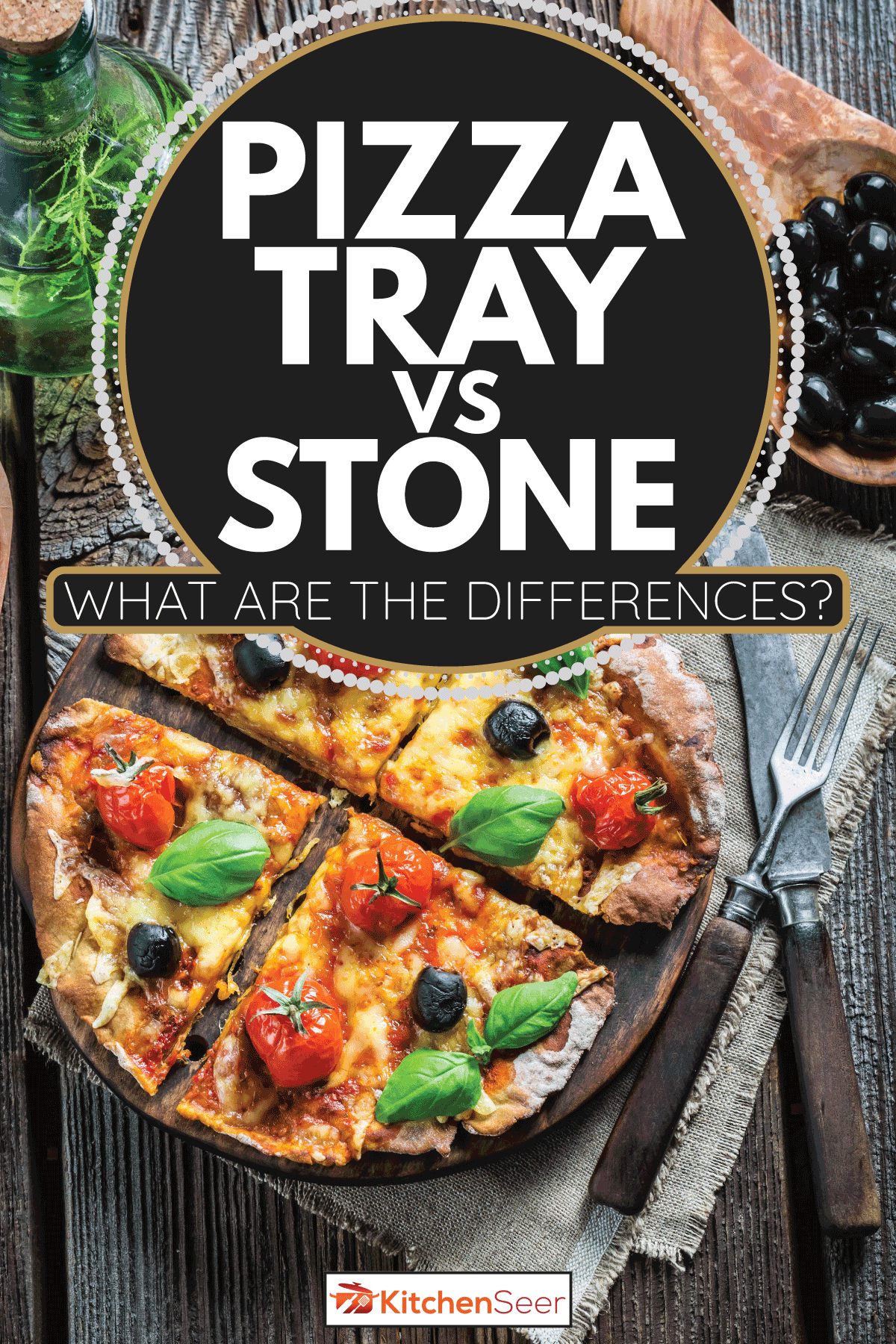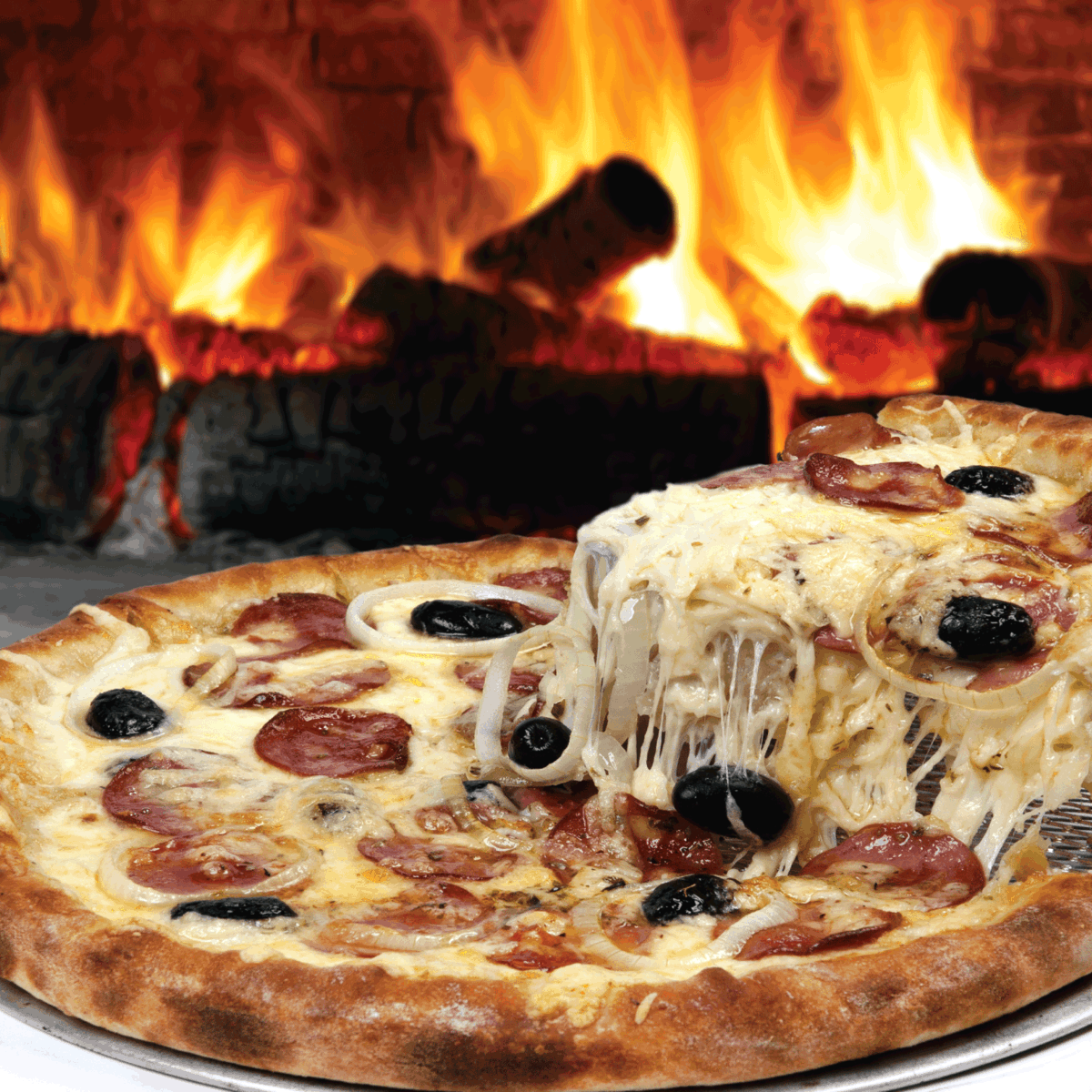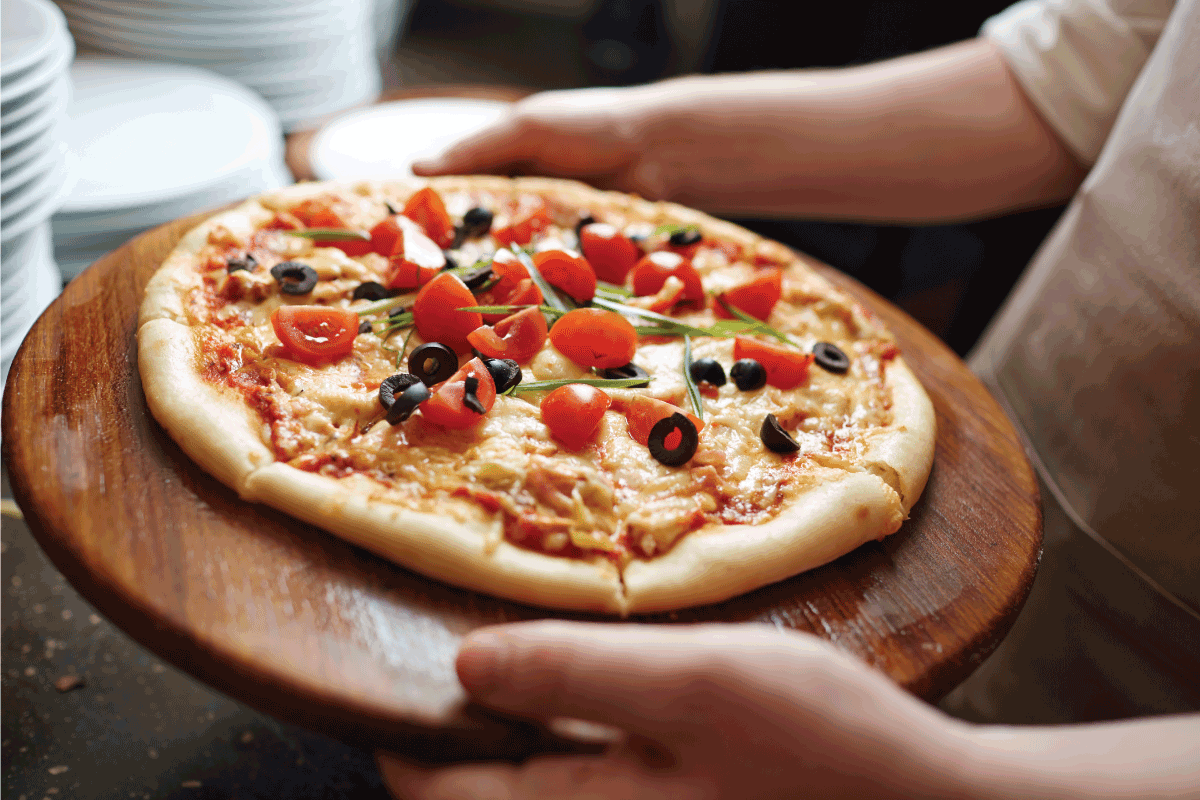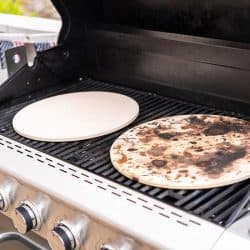It's pizza night! Once you have your pizzas prepared, it's time to bake them. You can use either a pizza tray or stone, but what are the differences? Look no further. We're here to give you all the details.
The main differences between pizza trays versus pizza stones are the material they are made of, how well they retain heat, how you clean them, and how much they cost. Both will work well for baking pizza, but they each have their advantages and disadvantages.
Keep reading to find out the advantages and disadvantages of pizza stones and pizza trays. We will also talk about whether or not pizza trays with holes are better, if it is worth it to get a pizza stone, whether or not you should oil your pizza stone, and more.

Differences in pizza trays and pizza stones
Some cooks prefer a pizza stone while others prefer pizza trays. This usually depends on how you like your pizza to be cooked. Whether or not you make your own pizza has an impact as well.

The Material They Are Made Of
Pizza stones are usually made of ceramic, clay, or cordierite (stone). A disadvantage of this is that they can break if dropped or if a cold one is exposed to extreme temperatures. This makes it crucial to allow your pizza stone to heat up inside your over as it's preheating.
Click here to see this pizza stone on Amazon
Pizza trays or pizza pans are most commonly made of metal. Most of the time pizza trays are made of aluminum or steel. You can find pizza pans made out of cast iron as well. Regardless of the type of metal, they are durable and will not break.
Click here to see this set of carbon steel pizza trays on Amazon
How Well They Retain Heat
Because pizza trays are made of aluminum or steel, they are very efficient heat conductors. They retain heat better than pizza stones. For this reason, they bake your pizza quicker. Pizza stones still conduct heat, just not as fast as pizza trays. They still work well when it comes to baking your pizza evenly.
How to Clean Pizza Stones vs. Pizza Trays
Pizza stones are wiped clean or brushed clean. You can brush or scrape off the leftover pizza or cheese from your pizza stone followed by scrubbing it with a paste of baking soda and water. Apply the paste then wipe the whole stone off with a damp cloth. Be sure to allow your pizza stone to dry completely before storing it or using it.
You can clean a pizza tray with dish soap and warm water. Use a sponge with a rough surface to loosen the leftover pizza or cheese. If you need to soak your pizza tray but your sink is not big enough to soak it all at once, that's okay. Rotate it periodically until all of it has had the chance to soak. If your pizza tray is dirty or stained, a mixture of baking soda and water will work when scrubbed. A scouring pad works best. Rinse thoroughly and allow it to dry.
How Much They Cost
The cost ultimately depends on the brand. You can find generic pizza stones and trays for under ten dollars just as easily as you can find either for $50 or more. Ceramic pizza stones are the most cost-effective when it comes to pizza stones. They are fired in a kiln which makes them able to withstand high temperatures. They can last for several years if taken care of properly.

Are pizza trays with holes better?
The answer to this depends on how you like your pizza. If you like your pizza to be more on the crispy side then yes, pizza trays with holes are better. They cook faster than alternative pans and result in a crispy crust. Another name for a perforated pizza pan is a pizza crisper pan. The name suits it well.
The way that a pizza tray with holes makes pizza crust crispy is by reducing the amount of moisture in the pan. This prevents your pizza from becoming soggy. Also, because the holes in a perforated pizza pan are evenly spaced, the pizza heats consistently.
Pizza trays are usually made of aluminum so they are durable. You can also find perforated pizza pans made of carbon steel. These are also sturdy and long-lasting.
Click here to see this product on Amazon.
Is it worth getting a pizza stone?
A pizza stone has the potential to break. Because of this, pizza trays are more durable and sometimes preferred. Pizza stones are slightly more difficult to store since they are thicker and heavier than pizza trays. When you use a pizza stone, you need to scoot the uncooked pizza onto the hot stone after it is preheated. This requires you to take your time and be a little more cautious.
People who enjoy making pizza for themselves and do so quite often do enjoy having a pizza stone. This is mainly because cooking with a pizza stone is likened to baking pizza in a brick oven. When pizza stones are preheated, they provide heat to the dough immediately, which puffs up the crust.
Pizza stones are available in different shapes and various sizes. For those who make pizza from scratch, a pizza stone provides a larger workspace. A pizza peel paddle is useful when transferring your pizza from a pizza tray onto a pizza stone.
Click here to see this product on Amazon.
Should you preheat a pizza stone?
You should preheat your pizza stone. Pizza stones will crack if the temperature varies too much. This happens whenever you put a cold pizza stone into a hot oven. The process is known as "thermal shock," which essentially means the stone cannot handle drastic temperature changes. Allow your pizza stone to heat as the oven heats up.
As for a pizza tray, you should preheat it too. When you preheat your pizza tray, the heat immediately hits it and begins cooking the dough. This results in a well-done, evenly baked pizza crust. If your pizza tray is perforated, air and moisture will be able to circulate.
Should I oil my pizza stone?
You should not oil your pizza stone. This is because oil can weaken the pizza stone. Your pizza stone needs to be dry prior to placing it in the oven.
Oiling a pizza tray has its benefits though. Greasing your pizza pan prevents the pizza dough from sticking. For perforated pizza pans, lightly coat them in a nonstick cooking spray or a thin layer of cooking oil. Using olive oil or canola oil helps increase the nutritional value of your pizza. It does so by adding unsaturated fats to your food. This increases the nutritional value because unsaturated fats are good for your heart.
Can you use a pizza tray on a pizza stone?
You can use a pizza tray on a pizza stone. It is a good idea to partially bake your pizza on the pan then transfer it onto the pizza stone for the remainder of the baking process. Some people like to make their pizza on the pizza tray and do not want to mess up their pizza by attempting to transfer it to a pizza stone. Use a pizza peel paddle during this process if you would rather cook on a pizza stone for the entire duration.
In Closing

Pizza trays and pizza stones have a few differences between them. These are usually made of some kind of metal while pizza stones are made from stone or clay. Pizza stones can break while pizza trays are more durable. You do not oil pizza stones, but do want to grease a pizza tray. Pizza trays tend to cook faster while both will result in a crispy crust if you preheat them and cook the pizza for the appropriate length of time.
Before you go, check out the following links about flour which is used to make pizza from scratch:
Bread Flour Vs. All Purpose Flour – Can You Substitute One For The Other?










![A delicious and perfectly cooked margarita pizza topped with sliced cherry tomatoes and mozzarella cheese, Do You Need To Grease A Pizza Tray? [Tips On How To Prepare One]](https://kitchenseer.com/wp-content/uploads/2021/06/A-delicious-and-perfectly-cooked-margarita-pizza-topped-with-sliced-cherry-tomatoes-and-mozorella-cheese-250x250.jpg)